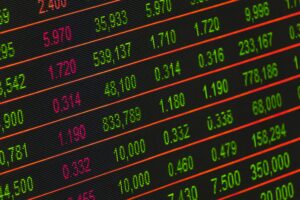History of Gold as an Investment
Gold has been a coveted asset throughout history for those looking for stability and wealth preservation. The practice of investing in gold dates back thousands of years, with civilizations recognizing its intrinsic value and rarity. The allure of gold as an investment stems from its ability to retain worth over time, making it a reliable hedge against economic uncertainties and inflation.
The historical significance of gold investment is evident in how it has been utilized as a form of currency, a symbol of power and wealth, and a store of value. From ancient empires using gold coins for trade to modern-day investors diversifying their portfolios with gold bullion, the appeal of investing in gold transcends generations and cultures. The enduring legacy of gold as a valuable asset underscores its importance in financial markets and as a cornerstone of investment strategies.
Benefits of Investing in Gold
When considering investment benefits, gold has long been regarded as a reliable asset class due to its intrinsic value and historical stability. Investors often turn to gold as a hedge against economic uncertainties and market volatility, encompassing a tangible security that balances a diversified investment portfolio. Despite the allure of gold’s perceived stability, it is crucial to acknowledge the potential investment risks associated with fluctuating market prices and liquidity constraints that may affect short-term returns.
In navigating the complex landscape of investments, gold offers a unique proposition as a safe haven asset that withstands the test of time. With a track record of preserving wealth and serving as a store of value, gold provides investors with a tangible asset that transcends fluctuating currencies and geopolitical instabilities. However, it is imperative for investors to carefully weigh the investment benefits against the inherent risks to make informed decisions that align with their financial objectives.
Risks and Considerations
Investing in gold, whether through physical gold like bars and coins or Gold ETFs and funds, comes with its fair share of risks and considerations. One primary risk to be mindful of is the volatility of gold prices in the market. The value of gold can fluctuate significantly based on various factors such as economic conditions, geopolitical events, and investor sentiment. This volatility can lead to sudden and sharp price movements, impacting the value of your investment in a short span of time.
Moreover, when considering investing in gold ETFs or physical gold, it is crucial to assess storage and security considerations. Physical gold investments require secure storage arrangements to safeguard the precious metal against theft or damage. On the other hand, Gold ETFs offer a convenient way to invest in gold without the hassle of physical storage, but investors should closely examine the liquidity of the ETF and its underlying assets to ensure transparency and ease of trading. Additionally, understanding the costs associated with each investment option is essential for making an informed decision about your gold investment strategy.
Different Ways to Invest in Gold
Investors seeking exposure to gold have a variety of options beyond physical gold holdings. One popular method is through digital gold, where investors can purchase fractions of physical gold electronically. This allows for easy accessibility and cost-effective transactions, making it attractive for those looking to invest in gold without the need for physical storage.
Additionally, integrating gold investments into a diversified portfolio can help mitigate risk and enhance overall returns. By including gold in a well-balanced investment portfolio, investors can potentially safeguard their wealth against market fluctuations and economic uncertainty. The intrinsic value of gold often serves as a reliable hedge, providing stability and long-term growth prospects for astute investors.
Gold ETFs and Funds
When considering the diversification of an investment portfolio with precious metals, gold ETFs and funds are popular options among investors. These financial instruments provide a convenient way to gain exposure to the gold market without the need for direct ownership of physical gold. Gold ETFs and funds offer the advantage of liquidity and ease of trading, making them suitable for investors seeking to incorporate gold into their long-term investment strategy.
Investing in gold ETFs and funds aligns with the idea of long-term gold investment, allowing investors to benefit from the potential price appreciation of the precious metal over time. By holding shares in these funds, investors can participate in the performance of the gold market without having to deal with the storage and security concerns associated with owning physical gold. This passive approach to investing in gold through ETFs and funds can be particularly appealing to those looking to diversify their portfolio and hedge against market volatility.
Physical Gold vs. Digital Gold
When considering investments in gold, individuals often find themselves contemplating between physical gold and digital gold. Physical gold, in the form of bars, coins, or jewelry, provides a tangible asset that can be physically possessed and stored. Investors value the security and tangibility that physical gold offers, as it serves as a hedge against economic uncertainties and inflation. However, owning physical gold also comes with its own set of challenges, such as safe storage, insurance, and authenticity verification.
On the other hand, digital gold, which includes gold-backed cryptocurrencies and digital platforms that allow users to invest in gold electronically, offers a convenient and accessible way to invest in the precious metal. Digital gold provides investors with the flexibility to trade and store gold without the need for physical possession. While digital gold eliminates the need for secure storage, it may expose investors to cyber risks and technological vulnerabilities. Additionally, the authenticity and credibility of digital gold platforms can sometimes raise concerns among investors.
Long-term Potential of Gold Investments
The long-term potential of gold investments remains evergreen in the realm of financial markets. With its intrinsic value and historical significance, gold stands as a reliable store of wealth that transcends time and economic fluctuations. Investors often look to gold as a safe haven asset during times of volatility, ensuring diversification and preservation of capital in their portfolios.
In the world of investing, gold’s status as a hedge against inflation and currency depreciation is well-established. As a tangible asset, gold holds its value over the long term, making it a strategic choice for investors seeking stability and security in their wealth preservation strategies. With its enduring allure and ability to weather market storms, gold investments continue to be a cornerstone of a well-rounded investment approach.
• Gold investments are considered a safe haven asset during times of market volatility
• Gold serves as a hedge against inflation and currency depreciation
• As a tangible asset, gold holds its value over the long term
• Investors often turn to gold for stability and security in their wealth preservation strategies



